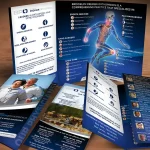Website design plays a crucial role in establishing a strong online presence for businesses and individuals alike. A well-designed website can attract and engage visitors, convey a professional image, and ultimately drive conversions. On the other hand, a poorly designed website can turn potential customers away and hinder the success of an online venture. In this blog post, we will explore various aspects of website design and provide tips and strategies for creating an effective and visually appealing website.
Key Takeaways
- Planning before designing your website is crucial for success
- Choosing the right color scheme and typography can greatly impact user experience
- A user-friendly navigation menu is essential for easy website navigation
- Responsive design is important for reaching a wider audience and improving user experience
- Optimizing images can improve website loading times and overall performance
The importance of planning before designing your website
Before diving into the design process, it is essential to have a clear plan in place. Planning allows you to define your goals, identify your target audience, and determine the overall structure and content of your website. By taking the time to plan, you can ensure that your website aligns with your objectives and effectively communicates your message.
One of the key benefits of planning is that it helps you establish clear goals for your website. Whether you want to generate leads, sell products, or provide information, having a clear understanding of your objectives will guide the design process and ensure that every element of your website serves a purpose.
Another important aspect of planning is identifying your target audience. Understanding who your website is intended for will help you tailor the design and content to meet their needs and preferences. By conducting market research and creating user personas, you can gain insights into your target audience’s demographics, interests, and behaviors, which will inform your design decisions.
Choosing the right color scheme and typography for your website
Color and typography are powerful tools in website design that can evoke emotions, convey brand identity, and enhance readability. When choosing a color scheme for your website, it is important to consider the psychology of colors and how they can influence user perception. For example, warm colors like red and orange can create a sense of urgency or excitement, while cool colors like blue and green can evoke feelings of calmness or trust.
Typography also plays a crucial role in website design. The font you choose can impact the readability and overall aesthetic of your website. It is important to select fonts that are legible and align with your brand identity. Sans-serif fonts are often preferred for online content due to their clean and modern appearance, while serif fonts can convey a more traditional or formal tone.
How to create a user-friendly navigation menu
A user-friendly navigation menu is essential for helping visitors navigate your website and find the information they are looking for. A poorly designed navigation menu can confuse users and lead to high bounce rates. To create an effective navigation menu, it is important to prioritize clarity and simplicity.
Firstly, it is important to use clear labels that accurately describe the content or sections of your website. Avoid using vague or generic labels that may confuse users. Instead, opt for descriptive labels that clearly indicate what users can expect to find when they click on a menu item.
Secondly, organizing your content logically is crucial for creating a user-friendly navigation menu. Group related pages or sections together and use submenus or dropdown menus to further organize your content. This will make it easier for users to navigate through your website and find the information they need.
The benefits of using responsive design for your website
In today’s mobile-first world, having a responsive website design is essential. Responsive design ensures that your website adapts to different screen sizes and devices, providing a seamless user experience across desktops, tablets, and smartphones. With the increasing number of people accessing the internet on mobile devices, having a responsive website is crucial for reaching and engaging a wider audience.
Implementing responsive design on your website involves using flexible layouts, fluid images, and media queries to adjust the design based on the user’s screen size. This ensures that your website looks and functions optimally on any device, providing a consistent experience for all users.
How to optimize images for faster loading times
Image optimization is a critical aspect of website performance. Large and unoptimized images can significantly slow down your website, leading to higher bounce rates and lower search engine rankings. To optimize your images, it is important to compress them without sacrificing quality and use the correct file format.
Compressing your images reduces their file size, making them load faster without compromising their visual quality. There are various tools available that can help you compress your images, such as Adobe Photoshop or online image compression services.
Choosing the correct file format is also important for image optimization. JPEG is the most commonly used format for photographs and complex images, as it provides a good balance between image quality and file size. PNG is ideal for images with transparency or simple graphics, while GIF is suitable for animated images.
The importance of including calls-to-action on your website
Calls-to-action (CTAs) are essential for guiding users towards desired actions on your website, such as making a purchase, signing up for a newsletter, or contacting you. A well-designed CTA can significantly increase conversions and drive user engagement.
When creating CTAs, it is important to use clear and concise language that clearly communicates the action you want users to take. Avoid using vague or generic phrases like “click here” or “learn more.” Instead, use specific and action-oriented language that tells users exactly what they can expect when they click on the CTA.
Contrasting colors can also help make your CTAs stand out and attract attention. Choose colors that contrast with the rest of your website design to ensure that your CTAs are easily noticeable. Additionally, consider the placement of your CTAs on your website. They should be strategically placed in areas where users are likely to see them, such as at the end of blog posts or on product pages.
How to use whitespace effectively in your website design
Whitespace, also known as negative space, refers to the empty space between elements on a webpage. It is a crucial design element that can improve readability, create visual hierarchy, and enhance the overall user experience.
Using whitespace effectively involves creating a balance between content and empty space. Too much whitespace can make your website look empty and unprofessional, while too little whitespace can make it feel cluttered and overwhelming. By strategically using whitespace, you can guide users’ attention to important elements and create a sense of organization and clarity.
Whitespace can be used to improve readability by separating paragraphs and sections of text. It can also be used to create visual hierarchy by increasing the spacing between headings and subheadings. Additionally, whitespace can be used to highlight important elements, such as calls-to-action or key information.
Tips for creating engaging and informative content on your website
High-quality content is crucial for engaging visitors and keeping them on your website. When creating content for your website, it is important to focus on providing value to your audience and addressing their needs and pain points.
One effective way to create engaging content is through storytelling. By telling stories that resonate with your audience, you can capture their attention and create an emotional connection. Stories can be used to illustrate the benefits of your products or services, share customer success stories, or convey your brand’s values and mission.
Incorporating multimedia elements, such as images, videos, or infographics, can also make your content more engaging and visually appealing. Visual content is often more memorable than text alone and can help convey complex information in a more digestible format.
The benefits of using simple and clean design elements
Simple and clean design elements can enhance the user experience by reducing clutter and improving readability. Minimalistic design has become increasingly popular in recent years due to its ability to convey elegance, professionalism, and modernity.
Using simple design elements involves removing unnecessary elements and focusing on the essentials. This can include using a clean and uncluttered layout, using ample whitespace, and using a limited color palette. By simplifying your design, you can create a visually appealing website that is easy to navigate and understand.
Simple design elements can also improve website performance by reducing the amount of code and resources required to load your website. This can lead to faster loading times and a better user experience, especially on mobile devices with slower internet connections.
How to test and optimize your website for better performance
Testing and optimizing your website is an ongoing process that involves monitoring its performance, identifying areas for improvement, and implementing changes to enhance its speed, usability, and conversion rates.
One important aspect of testing and optimization is using analytics tools to track user behavior on your website. Tools like Google Analytics can provide valuable insights into how users are interacting with your website, such as which pages they visit, how long they stay on each page, and where they drop off. This data can help you identify areas of your website that may need improvement.
User testing is another effective method for optimizing your website. By observing how users interact with your website and collecting their feedback, you can gain valuable insights into usability issues or areas that may be confusing or frustrating for users. User testing can be conducted through in-person sessions or remotely using tools like UserTesting.
In conclusion, website design plays a crucial role in establishing a strong online presence and driving conversions. By planning before designing your website, choosing the right color scheme and typography, creating a user-friendly navigation menu, implementing responsive design, optimizing images for faster loading times, including calls-to-action, using whitespace effectively, creating engaging content, using simple design elements, and testing and optimizing your website for better performance, you can create an effective and visually appealing website that engages visitors and drives results. Implement the tips and strategies discussed in this blog post to improve your website design and enhance your online presence.
If you’re a beginner in website design and looking for guidance on which platform to choose, you might find this article on Bracha Designs helpful. It provides an ultimate comparison of WordPress, Squarespace, and Wix, three popular website building platforms. The article discusses the pros and cons of each platform, helping you make an informed decision for your website. Check it out here.
FAQs
What is website design?
Website design refers to the process of creating the visual layout and user interface of a website. It involves the use of various design elements such as color, typography, images, and layout to create an aesthetically pleasing and functional website.
Why is website design important?
Website design is important because it can greatly impact the user experience of a website. A well-designed website can make it easier for users to navigate and find the information they need, while a poorly designed website can be frustrating and difficult to use.
What are some basic principles of website design?
Some basic principles of website design include simplicity, consistency, and usability. A simple and clean design can make it easier for users to navigate a website, while consistency in design elements such as color and typography can create a cohesive and professional look. Usability refers to the ease with which users can interact with a website and find the information they need.
What are some common design elements used in website design?
Common design elements used in website design include color, typography, images, and layout. Color can be used to create a mood or convey a message, while typography can affect the readability and visual appeal of a website. Images can be used to add visual interest and convey information, and layout refers to the arrangement of design elements on a page.
What are some tools and software used in website design?
Some tools and software commonly used in website design include graphic design software such as Adobe Photoshop and Illustrator, website builders such as Wix and Squarespace, and content management systems such as WordPress. There are also many online resources and tutorials available for beginners to learn website design.















0 Comments